Peach vs. Pink: A Guide to Understanding Your Skin's Undertones

Key Takeaways
- Peach skin tone mixes pink and yellow undertones, generating warm radiance that works across a lot of makeup, clothing and hair colors. Test with swatches on your jawline in natural daylight to see how shades interact with your undertone.
- Light transforms everything - daylight reveals the real warmth, fluorescents make skin appear cooler, or drab. Test makeup and outfit colors in a couple lighting scenarios before you commit.
- Peach isn't fair and it's not pink or olive or golden undertones. Test side by side with blush and foundation to appreciate the balanced warmth that makes peach special.
- Quick undertone checks assist you in confirming if you're peach, like the vein, jewelry, and white fabric tests. Use a combination of techniques and photograph in natural light for the best possible score.
- Accentuate your tone with peach, coral, apricot, bronze and champagne makeup and wear warm earth tones, soft pastels and gold or copper. Stay away from super cool or stark colors that wash out your glow.
- Discovering foundation is a game of patience — test warm or peach-labeled formulas and swatch shades in sunlight. Sample kits or a shade finder can help you dial in a seamless match as seasons and skin change.
🎨 Discover Your Personal Color Palette
Ready to discover your perfect color palette? Use our expert analysis to identify the colors that make you look and feel your absolute best. From skin undertones to feature matching, find your ideal color combinations.
Find Your Color Palette →Peach skin tone is a warm, soft color with a fair to medium base and undertones of pink and yellow. Most folks with this tone tan golden and may blush a bit under the sun.
In makeup, neutral-warm foundations with peach or golden undertones go well. As for dresses, colors such as coral, teal and gentle navy suit peach skin tone beauties.
To provide some context, the following sections break down quick tests, shade ranges, and care tips that actually work.
📚 Recent Articles
What is a peach skin tone?
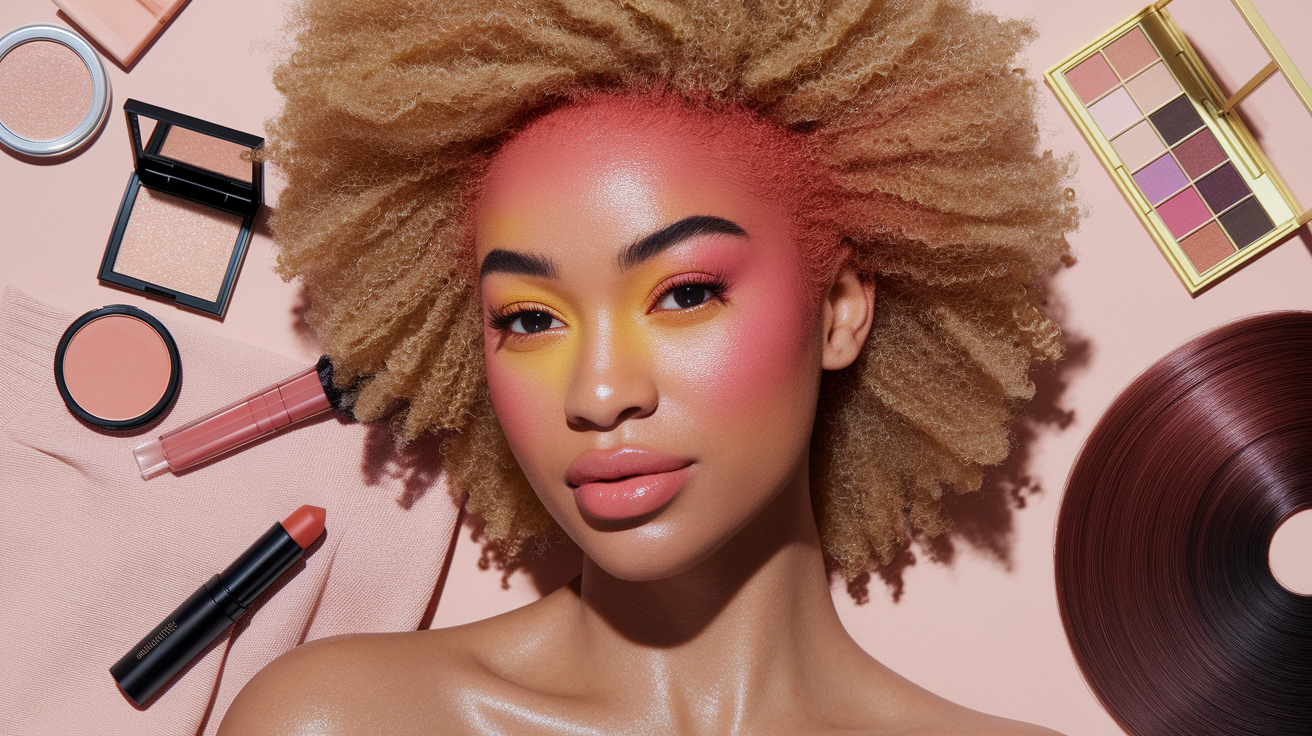
Peach skin tone is a warm combination of pink and yellow undertones that resemble a ripened peach. Not one absolute color, but rather a spectrum of warm undertones—golden, peachy or a smidge orange-yellow—often perceived as sun-kissed. This warmth radiates a natural glow that is distinct from cool tones with blue or pink undertones and neutral tones in the middle.
It appears on numerous ethnicities at every level, from light to dark, and complements an eclectic blend of makeup, hair and wardrobe hues.
1. The undertone blend
Peach is where pink and yellow meet. That combination adds warmth without going full on golden, and adds a flush without reading red.
This is what separates it from just pink, just yellow or olive. Olive goes green-gray, peach stays alive and bright. 100% pink can look cool, peach stays warm.
The mix alters the way products appear on skin. Coral blush can look fresh, but cool fuchsia turns stark. Warm or warm-neutral based foundations tend to match better than cool or strongly olive ones.
Try it on your own skin. Stripe 2 or 3 shades of foundation and a coral-to-rose blush range on your jaw in daylight, and see which shade disappears into your skin without looking gray or orange.
2. Surface appearance
Typically, peach skin tends to have a soft flush, almost like a casual morning jog glow.
In natural light, it can look luminous and healthy, with a subtle warm sheen that reads alive rather than shiny.
You may have a slight rosy undertone, a hint of peach fuzz or a golden sun-kissed veil (SPF). This signals warmth underneath.
Check in daylight, shade and soft indoor light to see its true color range. Each light exposes a slightly different facet of the tone.
3. Common misconceptions
Peach is more than red or pink undertone. The yellow-golden component counts.
Not just fair skin. Medium and deep skin tones can be peach, with rose-gold warmth instead of olive green.
Peach isn't olive. Olive leans green or gray. Peach leans pink-golden.
Pastels aren't the only victory. Earthy terracotta, striking teal, warm navy and coral can flatter as well.
4. Global variations
Peach undertones exist across the globe, not just in European lineage. You'll see them across South Asian, Latin American, Middle Eastern, East Asian and African diasporas.
Depth ranges from fair peach with a soft pink-gold, to deep peach with a rich golden-rose warmth.
Names shift by region—"golden," "warm," "honey," or "rose-gold"—but the undertone idea is the same: warm, not cool.
To learn some diversity, create an easy chart in your own home of how fair, medium, tan and deep peach swatches differ from brand to brand, from area to area.
5. Lighting's role
Daylight shows true undertone and radiance best.
Fluorescent light mutes warmth, pushing skin cooler or dull. Warm LEDs could push too golden.
Test make-up and clothes in sun, shade and indoors before you purchase or commit.
Stripe the jawline in nice sunlight with two warm-neutral foundations, one warm, one olive, to double-check the undertone match.
Identify your undertone
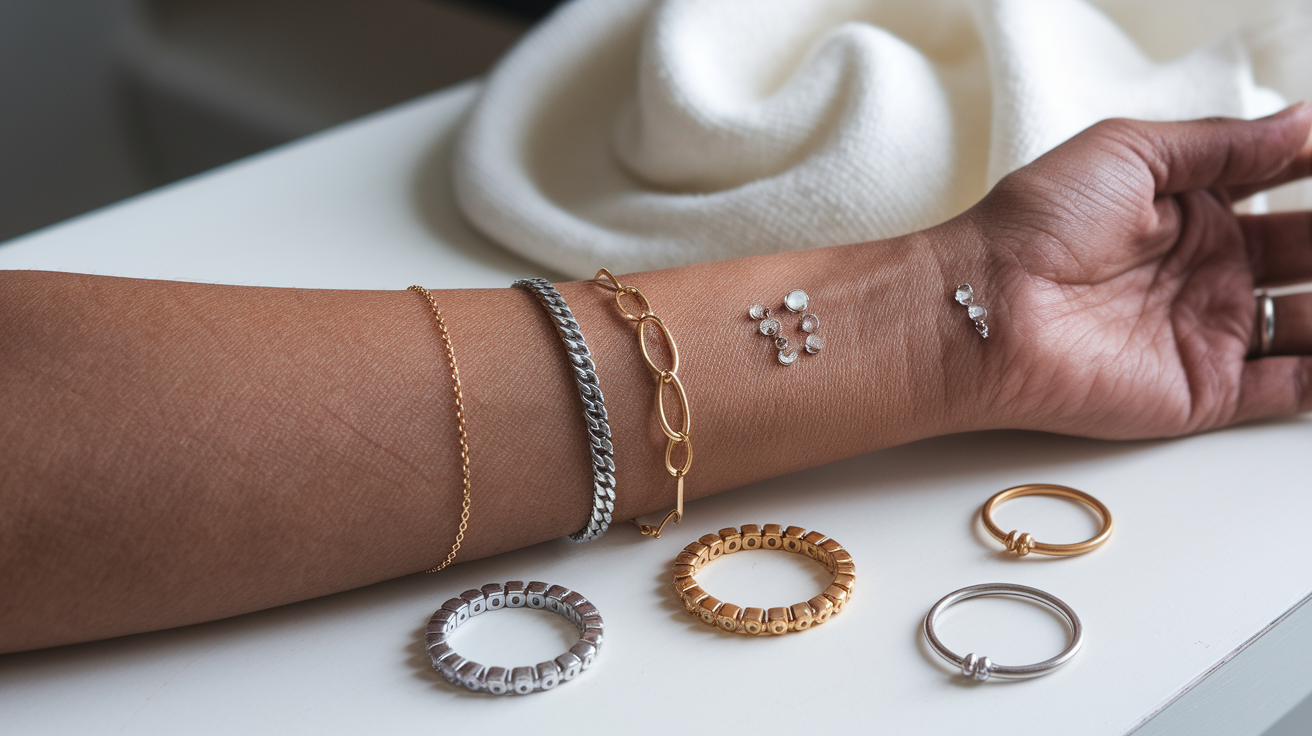
Undertone is the muted color beneath your skin, not your shade. Skin tone and undertone, they're not the same – one changes with sun or season, the other remains constant. There are three traditional undertones: warm, cool, and neutral.
Peach floats in the warm family and leans soft, like a blush of pink blended with golden. Olive is its own category, with neutral and warm plus a green cast that's specific to olive skin. Knowing this helps select foundation, blush and lipstick that look authentic on your face, and it informs a wardrobe palette that feels unified.
Try multiple tests for greater precision — results can vary from individual to individual.
The vein test
Stand next to a window at noon, and look at the veins on your wrist. If they read green or teal, you're probably warm leaning – that is often peach undertones. Blue or purple veins indicate cool, where blue, red, or pink tones lie beneath the skin.
See both? You might be neutral, which can wear a wider range. Check both arms for uniformity. One wrist can appear different post-workout or in shade. If the color is ambiguous, use a mirror to reduce glare, or bring in a friend who can detect subtle changes.
Snap a quick pic for later. You'll observe trends across days.
The jewelry test
Test gold and silver in the same light. Gold flatters peach and other warm undertones by adding a soft glow. Silver complements cool undertones, highlighting pink or red notes without making them ruddy. Neutral frequently models them both well.
Look at your face, not the metal. If your skin shines more vibrantly and less washed out in gold, that's a warm hint. If silver sharpens your features and levels redness, that's cool. If both do, notice which one feels more 'alive' than fashionable.
- Warm/peach-friendly: yellow gold, champagne gold, bronze
- Cool-friendly: silver, platinum, white gold, rhodium
- Neutral/olive-flex: mixed metals, rose gold, brushed finishes
The white fabric test
Place a white tee near your face in daylight. If you sallow or gray, icy white washes over that glow and it's a clash. Switch out for ivory or cream. Peach undertones tend to read healthy and lit from within against off‑white, cream or soft beige, not crisp white.
Try white and ivory next to each other. Step outside, then by a window, to prevent color casts from bulbs. Take photos in natural light and compare. If ivory smoothes freckles and softens redness, you're probably warm/peach.
If bright white makes you look clear and rosy, that suggests cool. Yet olive may like ecru or sand, which reflect is green-warm admixture.
Peach skin tone vs. others
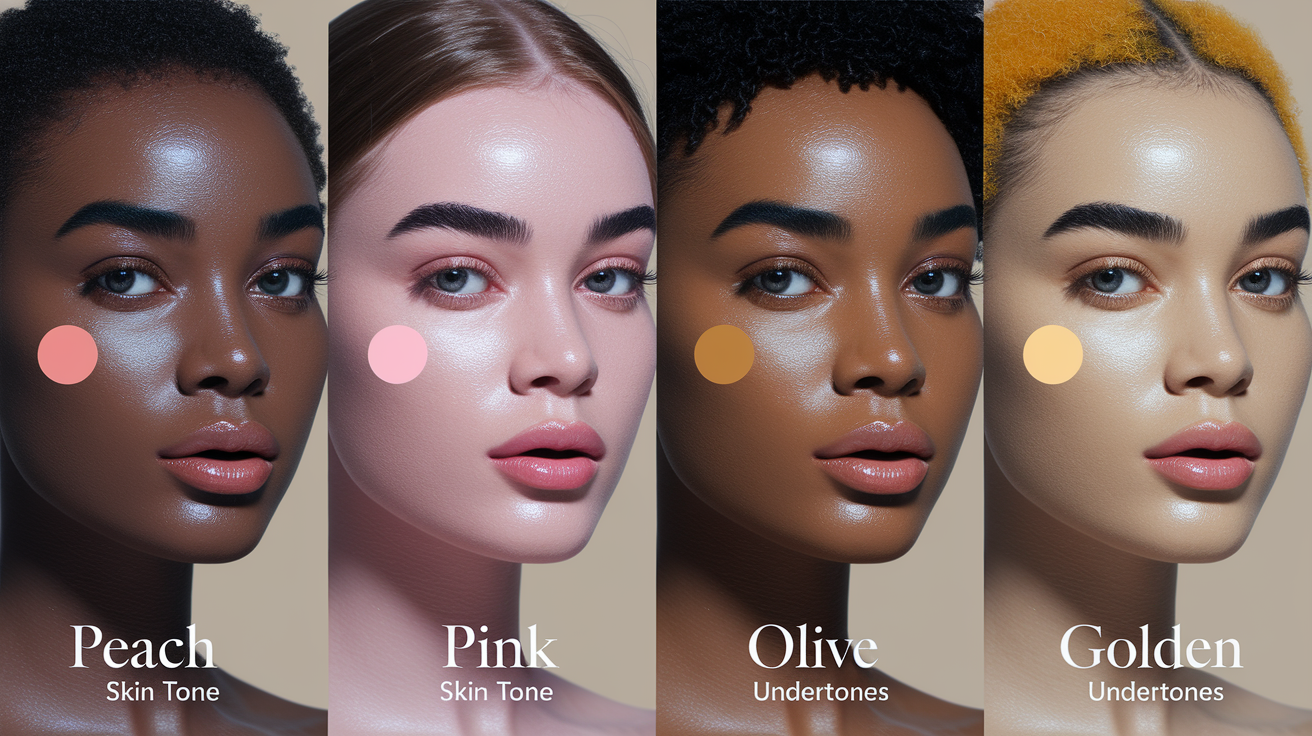
Peach is a warm skin tone that marries pink and yellow, falling between cool rosy and strong golden. This beautiful peach skin tones color scheme accounts for why certain formulas lean too sallow or too orange on peach skin color schemes, and why shade-finders occasionally misinterpret it. Understanding where peach veers away from pink, olive, and golden means you can select shades and formulas that stay natural across seasons and shifts in your skin.
| Undertone | Temperature | Key cast | Best color families | Common mismatches |
|---|---|---|---|---|
| Peach | Warm with pink | Soft peachy-gold | Earthy nudes, corals, soft pastels | Too orange or too beige foundations |
| Pink | Cool | Rosy, blue-red | Blue-based pinks, cool reds, plums | Warm yellow bases look sallow |
| Olive | Neutral-warm | Green/gray tint | Jewel tones, teal, sapphire | Peach/golden bases turn muddy |
| Golden | Warm | Yellow/gold | Marigold, warm orange, bronze | Cool pinks look stark |
Versus pink
Pink undertones are cooler and rosier, lacking the yellow warmth that characterizes peach. On pink skin, redness sits closer to the surface, so blue-based shades often soothe it.
Peach skin tone carries well both warm and some cool colors. A coral lip or muted mauve blush or soft taupe shadow sits beautifully. Pink undertones rest on cool tones—blue-red lipsticks, icy pink blush, and silver highlighter.
Peach typically appears less flushed than intense pink undertones, which may come across as ruddy in heat or post-exfoliation. That equilibrium makes peach embrace a broader spectrum of neutrals.
Compare blush: peachy apricot and warm coral enhance peach; blue-based pinks and cool rose compliment pink undertones. For highlight, peach tends to adore golden or soft champagne shimmer.
Versus olive
Olive skin has a green or gray cast, not the warm, vibrant tone in peach. That slight green undertone causes certain warm tones to go flat, which is what makes olive so difficult.
Jewel tones sing on olive – emerald, sapphire and amethyst. Peach leans earthy and pastel: terracotta, dusty peach, sage, and soft coral. If a nude color looks ashy on you, you may be olive and not peach.
Peach doesn't have that ashy green undertone; it tends to be on the sunny, bright side. Since the vein test doesn't work for olive and peach, rely on brand shade finders — ones that clearly label 'olive' or 'peach' — and test in natural daylight.
Skin tones move with season, irritation or products. Switch undertone signals when your tone rums or settles.
Versus golden
Golden undertones are predominantly yellow or gold, with no pink thread in peach. That makes golden glow in marigold, warm orange and glossy bronze, while peach slides into soft cools when dulled.
Peach has softer, more balanced warmth. Foundations labeled "golden" often pull a bit too yellow. "Neutral-warm" or "peach" tend to sit nicer. Peachies often blend two colors to land in-between.
Try golden and peach on the jaw. The right one blends in with no flash line in 2–3 minutes. Highlighter matters: golden or champagne shimmer boosts peach; cool-toned frosts dull it.
Lest we forget, there are a lot of skin tones—over 110 worldwide—and peach happens to be one slice of the warm spectrum. Separating olive, golden, and peach in foundation systems avoids clash, as olive's green undertone seldom pairs well with peach bases.
Enhance your peach skin tone
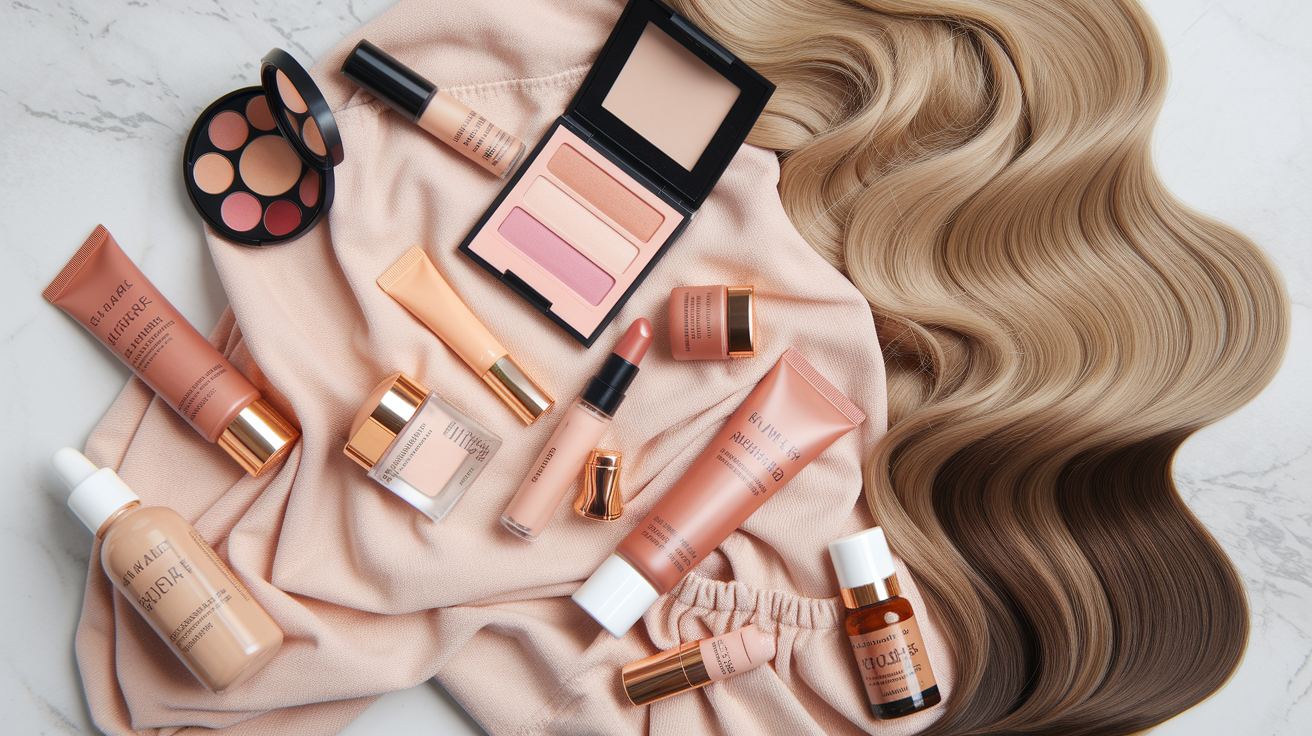
Peach skin tone is a blend of warm pink and yellow, creating a beautiful peach skin tones color scheme. You want to lift that warmth, not drown it, by choosing hues that complement your undertone and allow light to bounce subtly.
Makeup colors
Begin with a sheer, skin-match base using a tinted moisturizer or sheer foundation to even out your skin tone without masking your natural glow. Set just where necessary to ensure your skin still resembles its beautiful peach skin tones color scheme.
Blush does the heavy lift. Peach, coral and apricot provide a fresh flush that reads natural on warm undertones. Coral blush, in particular, pops on peach skin and adds shape to the face without seeming loud.
On lips, think warm: terracotta, soft pink, melon, or peachy-brown. These tones even out the pink-yellow blend and complete the look. For eyes, bronze, copper, warm browns and even peach shadow bring depth and make blue, green, hazel and brown eyes pop.
Finish with a champagne or pale gold highlighter on high points for a subtle glow. Keep textures light with cream blush, satin lipstick, and soft shimmer on the lids, creating a versatile complexion that feels alive on the skin.
Clothing choices
Pastel pinks, powder blues and warm earth tones like olive, terracotta, rust and mustard all sit beautifully on peach undertones. They surround the face and reflect the skin's heat.
Metallics do too. Gold and copper jewelry or hardware warm the look up quickly, from a slim chain to a belt buckle. Don't use very cool or stark shades—icy blues, optic white, or blue-reds—as they can wash the skin.
Soft white, cream and warm navy are safer substitutes. Build a small capsule of winners: cream tee, olive trousers, terracotta knit, light blue shirt, mustard scarf, and a gold-toned watch. Mix + match are work or weekend without clashing.
Hair color
Honey blonde and chestnut brown compliment light to medium peach tones by infusing glow without ashiness. For deeper peach undertones, auburn and rich copper add a vibrancy and keep the face bright.
Avoid ashy or blue-based dyes. They mute warmth and can appear ashen on skin. Use a hair color chart at the salon to map your undertone onto shade families, then strand or virtual try-on test prior to a full dye.
Skincare focus
Hydration comes first. Drink at least 8 glasses of water a day to help elasticity and glow. Seal with a light moisturizer that includes hyaluronic acid or superfruit extracts to draw and retain moisture.
Preserve your tone. Broad-spectrum SPF 30+ protects against UVA/UVB rays and it maintains color uniformity. Wear hats and long sleeves and find shade during peak sun hours to prevent you from getting unevenly dark.
Exfoliate 1-2 times a week with either gentle acids or a soft polish to even texture and increase light reflection. If your skin tends to be sensitive, opt for fragrance-free formulas that fortify the barrier and quell redness.
- Choose warm, soft shades near your undertone;
- Weave in olive, terracotta, mustard, cream and light blue fabrics.
- Favor gold or copper metal accents;
- Select hair dyes labeled warm (honey, chestnut, copper);
- Maintain light base makeup and accentuate with peach or coral blush.
- Use bronze or copper eyeshadow and champagne highlighter;
- Hydrate, exfoliate gently, and wear SPF 30+ daily.
The challenge of foundation
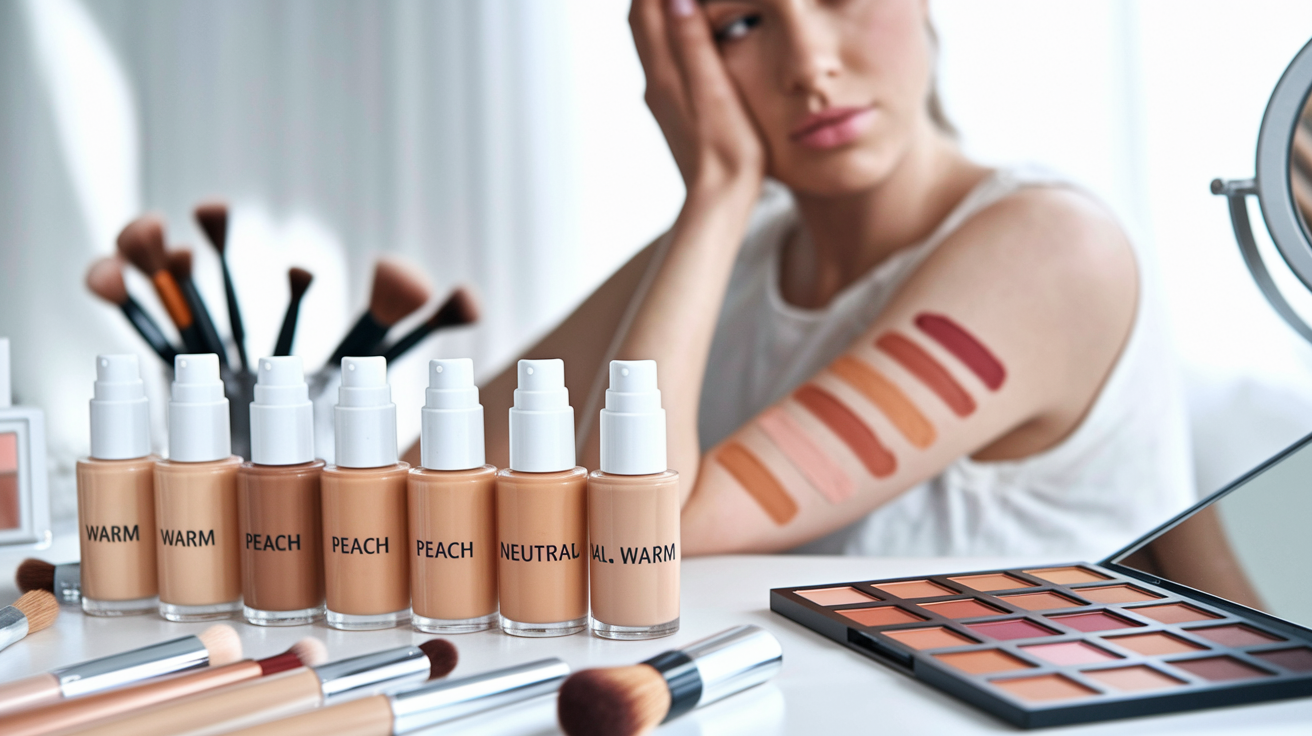
Peach skin can sit in a tricky middle ground: warm but soft, neither golden nor pink, with a hint of coral that shifts with light. This is where many of us trip because most linen lays yellow-gold or rosy-beige. Warm peachy undertones are less represented in shade lines, so a true match can sometimes feel elusive and hard to come by.
Consider undertone as watercolor under the surface, it colors everything. If your base shade is wrong, your entire complexion comes across as dull, ashy or orange.
Highlight the difficulty in finding foundation shades that perfectly match the peach undertone.
What makes peach so hard to compete with is the equilibrium. Surface tone can appear light, medium or deep, while the undertone remains warm with a gentle pink-orange hue. A shade that's 'warm' but too yellow can read sallow, one that's 'neutral' but too pink can turn chalky.
So most of us crave that second-skin look and smack into a wall of almost-right options. It's common to sample a bunch of bottles and still feel uncertain. To get closer, first sort undertone: ask if your skin reads cold or warm at a glance. If warm but not golden, you probably fall in the peach lane.
Recommend looking for formulas labeled as "warm," "peach," or "neutral-warm" for the best match.
Brands help, even if they differ by labels. Scan for cues: warm, peach, neutral-warm, warm-neutral, or codes with "W," "PW," or "NW" depending on the brand's map. For liquids, select light-to-medium coverage with a bendable finish.
They bend to complex undertones better than dense matte shrouds. For cushions or tints, look for warm-peach notes in the shade name. If you're using two close shades, blend in a drop of a warm-neutral into a soft pink-beige to push it peach.
Suggest swatching multiple shades along the jawline in natural light to ensure a seamless blend.
Test at the junction of face and neck. Apply 3-5 thin swipes, from cheek-jaw-neck, in daylight by a window or outside. Wait 5–10 minutes to observe dry-down and any shift.
The appropriate hue is not one that fades on the face OR the neck, but on both. If your face is warmer than your neck, tone the neck to avoid a mask line then warm the face with a peach toned bronzer.
Advise using a foundation shade finder tool or sample kits to identify the closest match for your skin.
Online tools whittle it down quickly. Take a shade finder from a brand you're familiar with so as a proxy, enter your undertone, and double check swatch pictures on multiple skin tones.
Get sample kits or travel sizes in 2-3 nearby shades, then test, cheek per cheek and blend out. Compare one disappears and still looks good after 8 hours. Keep notes: brand, shade code, wear time, and any shift to orange or gray.
Beyond the surface

Peach skin tone sits at a lively crossroad: soft warmth with a hint of pink, often described as a beautiful peach skin tones color scheme. It can appear sunlit in summer and subdued in winter, yet the spirit remains consistent. Undertones, like a color palette, contour how the entire face reads, informing decisions that resonate and resemble you.
Encourage embracing the unique beauty and versatility of peach skin tone in all aspects of personal style.
Consider peach your blank canvas. On makeup, soft coral, rose and warm beige nudes echo the peach note, muted berry or brick can add depth for nights out. For the eyes, bronze, copper and taupe provide balance without glare, with slate or espresso liner for freshness.
In clothes, imagine earthy neutrals (camel, cocoa, stone) for serene days, then add teal, navy or forest green to intensify contrast. Brushed gold jewelry warms peach, while silver or platinum can provide a cool edge to crisp shirts and black jackets. Glasses frames in tortoise or warm clear acetate compliment every day; deep green or graphite add sophistication to evening wear.
Remind that undertone awareness enhances confidence in makeup, fashion, and hair choices.
There are generally four main types of undertones: cool, warm, neutral, and olive. Cool undertones lean blue, red or pink, warm undertones read golden or yellow, some people land neutral–hard to call cool or warm, olive has warmth plus a soft green cast and frequently tans well.
Undertones stay the same all year round, even if your shade changes in sun. Check yours in daylight near a window: do you see more pink/blue or yellow/golden, or a slight green veil? For peach skin, a warm or neutral base is typical, but there's olive-peach as well.
Once you know this, foundation matching gets simple: pick shades that disappear on your jaw in natural light. Lipsticks of a similar undertone appear seamless, while those of the opposite can be bold accents that still feel natural.
Highlight the importance of adapting routines as skin changes with age, season, or environment.
Skin tans with sun and ages gently. Maintain the enthusiasm, but change depth. In summer, step up to a sheer SPF tint one shade deeper. In winter, go lighter base and sprinkle on cream blush in warm rose to revive.
If going to dry air, layer a humectant serum and opt for satin instead of mattes. If humidity climbs, touch up just the T-zone and apply long-wear creamy pencils. Hair color should flex, too: warm caramel lights up summer peach. Soft mocha or mushroom brown grounds winter peach without washing it out.
Suggest celebrating the diversity of peach skin tones by sharing tips and experiences with others.
Pass along what works. Exchange brand names, do swatch photos in sunlight, share undertone codes. Design easy experiments—gold vs. silver jewelry pictures, lipstick duels—that assist girlfriends in recognizing their own 'watercolor' shade.
Exchange local sun-care secrets and SPF formulas, and track shade transitions in various seasons. The more people see examples, the easier peach looks to all.
Conclusion
It literally reads warm, soft and bright, peach skin. It just hangs in that sweet spot between gold and pink. Little shifts in light alter it quickly. So an intelligent shade match does way more than just lift.
To maintain fresh skin, consider equilibrium. A sheer base, a light hand with blush and a glow – do the trick. Warm rose, coral and soft apricot all play nice. Gold jewelry gives a pop. Cool silver can do its thing with a peach lip to even the tone. For a quick trial, swab around the jaw in daylight. Let it sit for a couple minutes. Examine the mix from 1m.
Wanna get it more dialed in? Tell me your undertone, your favorite brands and your climate. Let me assist you in constructing a quick shade short list.
Frequently Asked Questions
What is a peach skin tone?
Peach skin tone appears light to medium with a warm-pink softness. It mixes warm (yellow) and cool (pink) notes, resulting in a bright, vibrant appearance. It tends to look bright in natural light and complements warm, muted shades well.
How do I identify if I have a peach undertone?
Look for veins in natural light; if they appear blue-green and gold jewelry complements you, then you likely have a beautiful peach skin tone. Your skin might flush pink easily, indicating a warm peach undertone. The white paper test reveals your skin's overall hue, appearing warm yet slightly pink beside pure white.
How is peach skin tone different from neutral, warm, or cool?
Peach, a beautiful peach skin tone, is warm with a pink lift, while neutral skin tones offset yellow and pink. This versatile complexion appears vibrant and delicate, avoiding extremes of yellow or rosy hues.
What makeup shades complement peach skin tone?
Choose warm, soft shades like apricot blush, coral or peach lipstick, and warm neutrals for eyes. Foundations labeled with neutral peach or warm undertones tend to provide a good color match. Skip overly ashy or very yellow bases.
Why is foundation matching hard for peach skin tones?
Many brands separate warm (yellow) and cool (pink) shades, but achieving a good color match for peach skin tones requires both. This often leads to mismatches, so seek out brands with "peach," "warm-neutral," or "rosy-warm" ranges.
What clothing colors flatter peach skin tone?
Try warm pastels and mid-tones: coral, salmon, soft terracotta, warm beige, teal, and olive. Steer clear of very cool grays or icy pastels that wash you out. Shoot for a softly warmed peach with a touch of rose.
How can I enhance peach skin naturally?
Use skincare that boosts radiance: gentle exfoliation, vitamin C serum, and daily SPF 30+. Drink plenty of water. Select light, dewy finishes to maintain the freshness of the complexion, enhancing the beautiful peach skin tones color scheme.